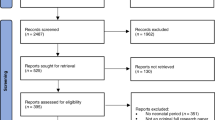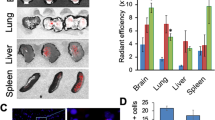Abstract
Introduction
NeuroAiD (MLC601 & MLC901)’s neuroprotective capabilities include limiting exaggerated calcium influx, decreasing excitotoxicity, reducing oxidative stress, and preventing glutamate-induced cell death. It has also been shown to facilitate synaptogenesis, neurogenesis, and neuroplasticity. However, its clinical efficacy has primarily been studied in the context of brain injuries, particularly stroke. NeuroAiD’s potential application in SCI remains largely untapped.
Case presentation
A 34-year-old male presented with C4 complete tetraplegia. Following surgical decompression and initial inpatient rehabilitation, he started consuming MLC901 two capsules three times daily at month 4 post injury for 6 months. He regained considerable neurological recovery following the supplementation. Apart from the improvement in the neurological level of injury, the patient exhibited motor recovery beyond the initial zone of partial preservation up to 24 months post injury.
Discussion
Our findings align with a recent animal study demonstrating MLC901’s potential to downregulate Vascular Endothelial Growth Factor (VEGF), a molecule known to increase vascular permeability and exacerbate tissue edema and infarction. In another animal study involving stroke-affected mice, MLC901 demonstrates the ability to promote neurological recovery by regulating the expression of proteins mediating angiogenesis, such as hypoxic inducible factor 1α, erythropoietin, angiopoietins 1 and 2, as well as VEGF. The anecdotal findings from this case report offer preliminary insights into NeuroAiD’s potential in facilitating recovery during post-acute and chronic phases of severe SCI, necessitating further exploration.
This is a preview of subscription content, access via your institution
Access options
Subscribe to this journal
Receive 1 print issues and online access
We are sorry, but there is no personal subscription option available for your country.
Buy this article
- Purchase on Springer Link
- Instant access to full article PDF
Prices may be subject to local taxes which are calculated during checkout

Similar content being viewed by others
References
Anjum A, Yazid MD, Fauzi Daud M, Idris J, Ng AMH, Selvi Naicker A, et al. Spinal cord injury: pathophysiology, multimolecular interactions, and underlying recovery mechanisms. Int J Mol Sci. 2020;21:7533.
Heurteaux C, Widmann C, Moha ou Maati H, Quintard H, Gandin C, Borsotto M, et al. NeuroAiD: properties for neuroprotection and neurorepair. Cerebrovasc Dis. 2013;35:1–7.
Venketasubramanian N, Young SH, Tay SS, Umapathi T, Lao AY, Gan HH, et al. CHInese Medicine NeuroAiD Efficacy on Stroke recovery – Extension study (CHIMES-E): a multicenter study of long-term efficacy. Cerebrovasc Dis. 2015;39:309–18.
Kumar R, Htwe O, Baharudin A, Rhani SA, Ibrahim K, Nanra JS, et al. Spinal cord injury - assessing tolerability and use of combined rehabilitation and NeuroAiD (SATURN) study - primary results of an exploratory study. J Spinal Cord Med. 2022;46:1–5.
Fawcett JW, Curt A, Steeves JD, Coleman WP, Tuszynski MH, Lammertse D, et al. Guidelines for the conduct of clinical trials for spinal cord injury as developed by the ICCP panel: spontaneous recovery after spinal cord injury and statistical power needed for therapeutic clinical trials. Spinal Cord. 2007;45:190–205.
Chay W, Kirshblum S. Predicting outcomes after spinal cord injury. Phys Med Rehabilit Clin N Am. 2020;31:331–43.
Burns AS, Marino RJ, Flanders AE, Flett H. Clinical diagnosis and prognosis following spinal cord injury. Handb Clin Neurol. 2012;109:47–62.
Scivoletto G, Morganti B, Molinari M. Neurologic recovery of spinal cord injury patients in Italy. Arch Phys Med Rehabilit. 2004;85:485–9.
Wahyudi, Islam AA, Hatta M, Adhimarta W, Faris M, Mustamir N, et al. The role of MLC901 in reducing VEGF as a vascular permeability marker in rats with spinal cord injury. Ann Med Surg. 2022;75:103344.
Gandin C, Widmann C, Lazdunski M, Heurteaux C. MLC901 favors angiogenesis and associated recovery after ischemic stroke in mice. Cerebrovasc Dis. 2016;42:139–54.
Author information
Authors and Affiliations
Contributions
MFZ was responsible for the formulation of the concept and design of the study, literature search, data collection and processing, analysis, and interpretation of the results, writing the manuscript, preparation of the table and figure, and reviewing and approving the final version of the manuscript. SAAH was responsible for the design of the study, literature search, analysis and interpretation of the results, and writing, reviewing, and approving the final version of the manuscript. NYK was responsible for the design of the study, literature search, writing, reviewing, and approving the final version of the manuscript.
Corresponding author
Ethics declarations
Competing interests
The authors declare no competing interests.
Ethics approval and consent to participate
This research has been conducted with the ethical approval of the National Medical Research Register Malaysia (NMRR ID-23-00237-EE9). Informed consent was also obtained from the patient prior to the development of this manuscript.
Additional information
Publisher’s note Springer Nature remains neutral with regard to jurisdictional claims in published maps and institutional affiliations.
Supplementary information
Rights and permissions
Springer Nature or its licensor (e.g. a society or other partner) holds exclusive rights to this article under a publishing agreement with the author(s) or other rightsholder(s); author self-archiving of the accepted manuscript version of this article is solely governed by the terms of such publishing agreement and applicable law.
About this article
Cite this article
Zainudin, M.F., Abu Hassan, S.A. & Khin, N.Y. Facilitation of neurological recovery in a complete spinal cord injury with NeuroAiD: case report. Spinal Cord Ser Cases 10, 16 (2024). https://doi.org/10.1038/s41394-024-00632-7
Received:
Revised:
Accepted:
Published:
DOI: https://doi.org/10.1038/s41394-024-00632-7



